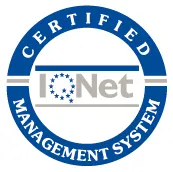
When talking about employee compensation, HR teams often mix up terms like benefits, perks, and incentives. Though they might sound similar, each has distinct implications — especially when legal obligations are involved. Understanding these differences isn’t just good HR practice, it’s essential for compliance and competitive strategy.
Table of Contents
This guide explains the four main categories — employee benefits, incentives, fringe benefits, and perks — with clear definitions, legal frameworks, examples, and tips on combining them effectively.
1. Employee Benefits
Definition:
Employee benefits are the standard compensations that every employer must provide, either because they are mandated by law or established in an employment contract/collective agreement. They form the baseline of the employment relationship and are non-negotiable rights for workers.
Legal basis in Europe:
- The EU Working Time Directive (2003/88/EC) guarantees employees at least four weeks of paid annual leave. (EU Commission – Employment and Social Affairs)
- The EU Directive on Work-Life Balance (2019/1158) regulates parental leave, carers’ leave, and flexible working arrangements.
- National laws then specify additional rights (e.g., sick leave, social security contributions, pension systems).
Classification of employee benefits:
- Legally mandated benefits:
- Paid annual leave
- Public holidays
- Sick leave with compensation
- Maternity, paternity, and parental leave
- Health and safety protections at work
- Social security contributions:
- Healthcare coverage (public or private, depending on country)
- Pension contributions (state or occupational schemes)
- Unemployment insurance
- Disability and accident insurance
- Contractual/collective agreement benefits:
- Extra paid leave beyond the legal minimum
- Employer-sponsored pension or retirement plans
- Extended health insurance packages
- Death or life insurance coverage
Examples:
- Spain: employers must contribute to Social Security, covering healthcare, sick leave, maternity/paternity, and retirement.
- Germany: statutory health insurance and pension contributions are mandatory.
- France: 25 days of paid annual leave are guaranteed, plus public holidays.
Impact:
Employee benefits guarantee stability, legal compliance, and financial security. They are not optional: failing to provide them exposes companies to fines, lawsuits, and reputational damage. At the same time, exceeding the minimum (e.g. offering more paid leave than required) can boost employer branding.
2. Employee Incentives
Definition:
Employee incentives are rewards linked to performance, effort, or specific achievements. Unlike employee benefits — which are guaranteed and often mandated by law — incentives are conditional: employees receive them only when certain goals or criteria are met.
Key difference between employee Incentives and employee benefits:
- Benefits = guaranteed and form part of the standard compensation package (e.g. paid leave, health insurance).
- Incentives = variable and tied to results, designed to boost motivation and productivity.
Legal framework in Europe:
- While incentives are not directly regulated like benefits, they fall under:
- EU Equal Treatment Directive (2006/54/EC): ensures incentive schemes do not discriminate by gender or other protected grounds.
- EU Pay Transparency Directive (2023/970): requires companies to disclose how variable pay (including incentives) affects overall compensation and pay gaps.
- National labor codes often require that incentive agreements be documented in contracts or collective bargaining agreements to avoid disputes.
Types of employee incentives:
- General performance incentives
- Linked to productivity, quality, innovation, or overall performance.
- Examples: employee of the month awards, innovation bonuses, team performance bonuses.
- Goal: encourage broad participation and motivation across the workforce.
- Sales incentives (commercial incentives)
- A more specific category tied to revenue-generating activities.
- Examples: commission structures, sales bonuses, quarterly sales contests, tiered rewards for achieving targets.
- Goal: directly align compensation with revenue growth and sales objectives.
- Note: Sales incentives are usually contractual, as they define part of the remuneration system for sales teams, unlike general discretionary incentives.
Examples in practice:
- Germany: collective agreements often include clear frameworks for bonuses and commissions, with dispute resolution mechanisms.
- Spain: commissions and sales incentives are recognized as part of “salario variable,” and must appear on the payslip (nómina).
- UK: incentive plans often distinguish between discretionary bonuses (not guaranteed) and contractual commission (legally binding).
Impact:
Incentives are powerful tools for driving motivation and aligning employees with company goals. However, they must be transparent, fair, and legally compliant to avoid claims of discrimination or unfair pay practices.
3. Fringe Benefits / Welfare Allowances
Definition:
Fringe benefits (also known as welfare allowances in some contexts) are non-mandatory benefits provided by employers to support employees’ daily lives and improve work-life balance. Unlike statutory employee benefits — which are legally required — fringe benefits are discretionary, though often encouraged or regulated through tax and labor laws.
Legal / Normative Framework in Europe:
- EU level: While not directly mandated, fringe benefits interact with EU labor law and taxation. For example, allowances are subject to the EU rules on taxation and social security coordination (Regulation (EC) No 883/2004).
- National examples:
- France: “Tickets Restaurant” (meal vouchers) are widely used, tax-advantaged, and regulated by law.
- Spain: The Ley del IRPF exempts meal vouchers, transport cards, and childcare checks from income tax up to certain limits.
- Germany: Employers may provide non-cash benefits (Sachbezüge) tax-free up to €50/month.
- Italy: “Buoni pasto” (meal vouchers) and welfare credits are regulated under the Italian Welfare Law (Fringe Benefit), offering fiscal incentives.
Classification of fringe benefits:
- Tax-advantaged allowances
- Meal vouchers, transport passes, childcare checks.
- Highly regulated, often with exemption thresholds.
- Voluntary welfare benefits
- Gym memberships, cultural vouchers, mobility budgets.
- Discretionary, but may qualify for tax reductions.
- Hybrid benefits (public-private schemes)
- In some countries, employers complement public services (e.g., health coverage upgrades or retirement savings plans).
- In some countries, employers complement public services (e.g., health coverage upgrades or retirement savings plans).
Examples:
- Meal vouchers, childcare subsidies, public transport cards, cultural vouchers, wellness allowances.
Impact:
Fringe benefits play a dual role:
- For employees: improve wellbeing, reduce personal expenses, and enhance work-life balance.
- For employers: strengthen retention, improve employer branding, and take advantage of tax efficiencies.
4. Perks
Definition:
Perks are non-contractual extras that employers provide to enrich the employee experience. Unlike benefits or incentives, perks are not legally mandated or performance-based; instead, they reflect company culture and values.
Legal / normative context:
- Perks are not regulated as mandatory benefits, but they still fall under general labor and tax rules:
- If perks have a monetary value (e.g., gym membership, company car, wellness allowance), they may be taxed as a “benefit in kind.”
- Equality and non-discrimination directives (e.g., EU Equal Treatment Directive 2006/54/EC) apply — perks must be accessible fairly to all employees.
Classification of perks:
- Lifestyle perks – extras that improve everyday life.
- Free snacks & coffee, gym memberships, wellness stipends.
- Free snacks & coffee, gym memberships, wellness stipends.
- Flexibility perks – linked to time and work models.
- Flexible Fridays, remote working options, additional rest days.
- Flexible Fridays, remote working options, additional rest days.
- Cultural & community perks – reinforce belonging and company culture.
- Team-building events, afterwork activities, company retreats, learning clubs.
- Team-building events, afterwork activities, company retreats, learning clubs.
Examples:
- Tech companies in the Netherlands offering bicycle allowances for sustainable commuting.
- UK employers providing mental health days or free counseling as part of workplace wellness programs.
- Startups offering budget for home-office equipment.
Impact:
Perks may not be legally required, but they are powerful tools for employer branding, employee satisfaction, and for showcasing company culture in competitive labor markets.
Employee benefits, incentives and perks: Comparative Table
| Category | Definition | Legal / Contractual Requirement | Examples | Main Impact | Tax Treatment |
| Employee Benefits | Standard compensations guaranteed by law or contract | Yes – regulated by EU directives & national labor codes | Paid vacation, parental leave, pension contributions | Security & compliance | Usually exempt from income tax (mandatory social contributions apply) |
| Incentives | Rewards tied to performance or results | No, but must comply with equality & pay transparency laws | Bonuses, commissions, profit-sharing | Motivation & productivity | Taxed as employment income; subject to payroll tax & social security |
| Fringe Benefits / Welfare Allowances | Non-mandatory daily-life advantages | Optional, but often regulated for tax purposes | Meal vouchers, transport passes, childcare support | Work-life balance & retention | Many are tax-advantaged up to certain limits (country-specific thresholds) |
| Perks | Informal extras reflecting culture | Not required by law, but must comply with equality rules | Free coffee, flexible Fridays, team events | Employer branding & culture | If monetary, taxed as “benefit in kind”; small perks may be exempt |
What is the main difference between employee benefits, incentives, fringe benefits, and perks?
Employee benefits are mandatory and legally required, incentives are performance-based rewards, fringe benefits support daily life with tax advantages, and perks are cultural extras that enhance the employee experience.
Are incentives legally binding for employers?
Yes — if an incentive such as commissions or bonuses is included in the employment contract or collective agreement, it becomes legally enforceable. Discretionary incentives, however, are not guaranteed.
Do fringe benefits and perks have tax implications in Europe?
Yes. Many fringe benefits (like meal vouchers or childcare checks) are tax-advantaged up to certain limits, while perks with monetary value (like gym memberships or company cars) may be taxed as benefits in kind.
How can HR teams build a balanced compensation strategy?
Start with compliance by covering all mandatory benefits, then add incentives for performance, fringe benefits for wellbeing, and perks to strengthen culture. Regular reviews and benchmarking ensure the package remains attractive and compliant.
6. How to Combine Them in Your HR Strategy
Designing a compensation strategy is not just about compliance — it’s about building a balanced package that attracts, motivates, and retains employees. The key is to use each category in a complementary way:
1. Start with compliance (Employee Benefits):
- Ensure all legally mandated benefits are fully covered (paid leave, social security, parental leave).
- Regularly review national and EU directives to avoid compliance risks.
- Example: In Spain, failure to register employees in Social Security can result in heavy fines.
2. Add performance drivers (Incentives):
- Use general incentives for motivation across the company (innovation awards, productivity bonuses).
- Implement specific sales incentives with clear and contractual rules (commissions, tiered sales bonuses).
- Best practice: Communicate targets clearly and ensure they are measurable and achievable.
3. Support daily wellbeing (Fringe Benefits):
- Choose allowances that address employees’ most pressing needs: transport, meals, childcare, or wellness.
- Align with fiscal advantages in each country to maximize ROI (e.g., tax-free meal vouchers in France and Spain).
- Example: A mobility budget in Germany not only supports employees but also aligns with sustainability goals.
4. Strengthen company culture (Perks):
- Offer perks that reinforce your employer brand: flexible Fridays, wellness programs, or cultural vouchers.
- Ensure inclusivity: perks should benefit all employees, not just a privileged group.
5. Create a holistic package:
- Benefits = security and compliance.
- Incentives = motivation and performance.
- Fringe Benefits = wellbeing and retention.
- Perks = culture and employer branding.
Strategic tip: Review your compensation mix annually. Benchmark against competitors, monitor employee feedback, and adapt to changing needs.
Building a Balanced Employee Experience
Employee compensation is no longer just about salary. Today’s HR leaders need to manage a mix of mandatory benefits, performance incentives, welfare allowances, and cultural perks.
The challenge — and opportunity — for HR is to combine these elements into a holistic strategy that is compliant with the law, attractive in the job market, and aligned with employees’ expectations. Companies that succeed not only reduce turnover but also strengthen engagement and their reputation as employers of choice.
New to Vip District? Contact us and find out what our platform has to offer!








